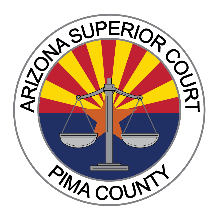Pima County, one of Arizona’s four original counties, came into existence on November 8, 1864, about 19 months after Congress passed, and President Abraham Lincoln signed, a bill establishing Arizona as a federal territory. The remaining original counties were Mohave, Yuma, and Yavapai.
Originally, Pima County encompassed all of the land in Arizona south of the Gila River between the New Mexico line and the eastern edge of Yuma County, an area essentially the same as the Gadsden Purchase. Between 1864 and 1899, the county lost territory to Maricopa, Pinal, Graham, Cochise, and Santa Cruz Counties as each of them was formed, but it still includes nearly six million acres (9,240 square miles). The Tohono O’odham and Pascua Yaqui Reservations occupy nearly half of Pima County. The economy of Pima County has traditionally been based on the “four C’s” cattle, copper, cotton, and climate.
Tucson was founded in 1775 and is the second-oldest non-Native American settlement in Arizona. It has been the seat of local government since the county was organized. The University of Arizona has been a fifth pillar supporting Tucson’s economy. In 1940, the opening of Davis-Monthan Army Air Field (now Davis-Monthan Air Force Base) deepened federal involvement, sporadic since territorial days, in the region’s livelihood. More recently a number of industrial enterprises, notably in the fields of high technology and electronics, have come to play important roles in the county’s economy.
In 1867, Tucson became Arizona’s Territorial Capital. By the next year, it was clear that the town needed a permanent courthouse as county and territorial business was being conducted in a pair of rented rooms. Accordingly, in 1868, the county bought land at the Corner of Court and Ott Streets from Mark Aldrich, who had been a judge in the days when Arizona was part of New Mexico. The purchase price was $200, a substantial sum at the time. On this plot Pima County’s first courthouse was constructed on a stone foundation. It was a flat-fronted adobe structure with a false gable. The contractor was Charles Meyer, a druggist and justice of the peace who was considered Tucson’s most prominent proponent of law and order.
This courthouse served the county only thirteen years. In 1881, population growth and desire to make Tucson into a Victorian city seemed to dictate the need for a new, more elegant structure, even though the territorial capital had moved back to Prescott four years earlier. The second courthouse, built on land purchased from Tucson Mayor Robert N. Leatherwood, was located on the northwest corner of Church and Pennington Streets, just south of its predecessor. It was a large, oblong, two-story brick building resting on a stone foundation and adorned with elaborate gables and a cupola. It afforded space not only for the court but also for most federal and county officials. Its northern wing, separated from the rest of the structure by a passageway, served as the city jail. This courthouse continued in use until 1928, when it was torn down to make room for a third one, built at the same location and opened the following year.
Roy W. Place, one of Tucson’s most distinguished architects, designed the third courthouse, which housed the Superior Court for 46 years. Built in 1929, its recent redesign now accommodates the Southern Arizona Heritage & Visitor Center, and soon, the University of Arizona’s Gem and Mineral Museum. Portions of the original courthouse were preserved during its renovation, including “Courtroom 8,” in which John Dillinger was arraigned in 1934. Built around three sides of a patio with a covered arcade enclosing the fourth side, the Historic Courthouse is a two-story stuccoed brick structure constructed in the Spanish Colonial Revival style. It features an elaborately carved facade and a large dome adorned with brilliantly colored ceramic tiles. It obtained its “Historic” designation in 1978 from the National Register of Historic Places.
The fourth Pima County Courthouse was built directly south of its predecessor, occupying the block between Congress and Pennington Streets along Church Street. Built in 1974, it is a component of the government complex planned as part of Tucson’s urban renewal. Matching two other county buildings and complementing Tucson’s city hall, the courthouse is a nine-story concrete and glass structure. Since its construction several renovations have been completed in order to add additional courtrooms.
In the years since Arizona achieved statehood and Governor George W. P. Hunt swore in William F. Cooper as Pima County’s first Superior Court Judge the court has grown from a single division to 30 divisions.
If you desire further information regarding the history of the Superior Court, please contact Community Relations.



